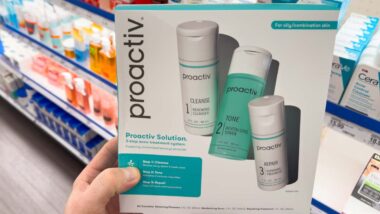Top Class Actions’s website and social media posts use affiliate links. If you make a purchase using such links, we may receive a commission, but it will not result in any additional charges to you. Please review our Affiliate Link Disclosure for more information.

Plaintiff Cindy R. filed a lawsuit in U.S. District Court for the District of Arizona on Sept. 9, 2017, joining multidistrict legislation (MDL) No. 2641. This MDL is a consolidation of many individual defective product claims against all CR Bard IVC filters. The defendants are CR Bard Inc. and Bard Peripheral Vascular Inc.
Cindy R. is a resident of the State of Nebraska and had the CR Bard Eclipse IVC filter implanted on Dec. 12, 2011 in the State of Nebraska.
While no specific information is available as to the injuries she sustained because of the implantation, some of her resultant problems can be inferred from the list of issues that have arisen with patient recipients of this product available in the long form documentation of this MDL.
The History of the IVC Filter
IVC filters have been used since the 1960s, but it has only been in recent years that they have been designed and promoted to be removable, for use in situations where the threat of a blood clot is only temporary.
Originally, IVC filters were made to be implanted permanently to filter out blood clots formed in the lower extremities – a situation known as deep vein thrombosis or DVT – and preventing them from reaching the heart and lungs. A blood clot that reaches the lungs is known as a pulmonary embolism or PE.
Umbrella-shaped IVC filters were given to patients whose clotting problems could not be resolved with the use of anticoagulant medications. In screening them out before they reached the heart and lungs, the filters were key medical devices that were supposed to prevent heart attacks, respiratory arrests, and strokes.
CR Bard Eclipse IVC Filter and Other IVC Filter Issues
In the pursuit of market dominance and proprietary gain, CR Bard began to re-imagine the IVC filter as “removeable” for patients undergoing total hip and knee arthroscopy, cancer treatment, trauma or weight loss interventions.
The first removeable product entering commerce was cleared in July 2003. Plaintiffs claim the efficacy of the removeable IVC filter was not truly reviewed, however until several years on the market and it was found to be equal to no intervention whatsoever.
Post-market studies revealed tendencies of the CR Bard filters to perforate the inferior vena cava, and fracture and migrate within the anatomy. These tendencies caused thrombotic events that the device was put in to prevent in the first place. They often resulted in serious injuries at best and, at worst, death.
The version known as the CR Bard Eclipse IVC filter was only slightly modified to be micro-polished. This micro-polish increased the resistance of the filter to fracture, but only in a minuscule way.
Still, reports show this model could and did perforate the aorta, duodenum, small bowel or spine. They were also discovered to be, in fact, very difficult to remove without consequence in spite of being represented as removeable.
Cindy R.’s Bard Eclipse IVC filter issues sparked her to bring the following counts against the defendants: Count One –Strict Products Liability, Manufacturing Defect; Count Two –Strict Products Liability, Information Defect; Count Three –Strict Products Liability, Design Defect; Count Four –Negligence, Design; Count Five –Negligence, Manufacture; Count Six –Negligence, Failure to Recall, Retrofit.
She also brings these additional counts against the defendants: Count Seven –Negligence, Failure to Warn; Count Eight –Negligent Misrepresentation; Count Nine –Negligence Per Se; Count Ten –Breach of Express Warranty; Count Eleven –Breach of Implied Warranty; Count Twelve –Fraudulent Misrepresentation; Count Thirteen –Fraudulent Concealment; Count Fourteen –Violations of Applicable Law Prohibiting Consumer Fraud and Unfair and Deceptive Trade Practices.
The plaintiff is asking for punitive damages, compensatory damages, pre-judgment and post-judgment interest, return of all court costs, attorney’s fees, and miscellaneous litigation expenses.
The Bard Eclipse IVC Filter Lawsuit is Case No. 2:17-cv-03033-DGC in U.S. District Court for the District of Arizona.
In general, IVC filter lawsuits are filed individually by each plaintiff and are not class actions.
Do YOU have a legal claim? Fill out the form on this page now for a free, immediate, and confidential case evaluation. The attorneys who work with Top Class Actions will contact you if you qualify to let you know if an individual lawsuit or class action lawsuit is best for you. Hurry — statutes of limitations may apply.
ATTORNEY ADVERTISING
Top Class Actions is a Proud Member of the American Bar Association
LEGAL INFORMATION IS NOT LEGAL ADVICE
Top Class Actions Legal Statement
©2008 – 2024 Top Class Actions® LLC
Various Trademarks held by their respective owners
This website is not intended for viewing or usage by European Union citizens.
Get Help – It’s Free
Join a Free IVC Filter Class Action Lawsuit Investigation
If you or a loved one were injured by IVC filter complications, you may have a legal claim. See if you qualify to pursue compensation and join a free IVC filter class action lawsuit investigation by submitting your information for a free case evaluation.
An attorney will contact you if you qualify to discuss the details of your potential case.
Please Note: If you want to participate in this investigation, it is imperative that you reply to the law firm if they call or email you. Failing to do so may result in you not getting signed up as a client, if you qualify, or getting you dropped as a client.
Oops! We could not locate your form.












